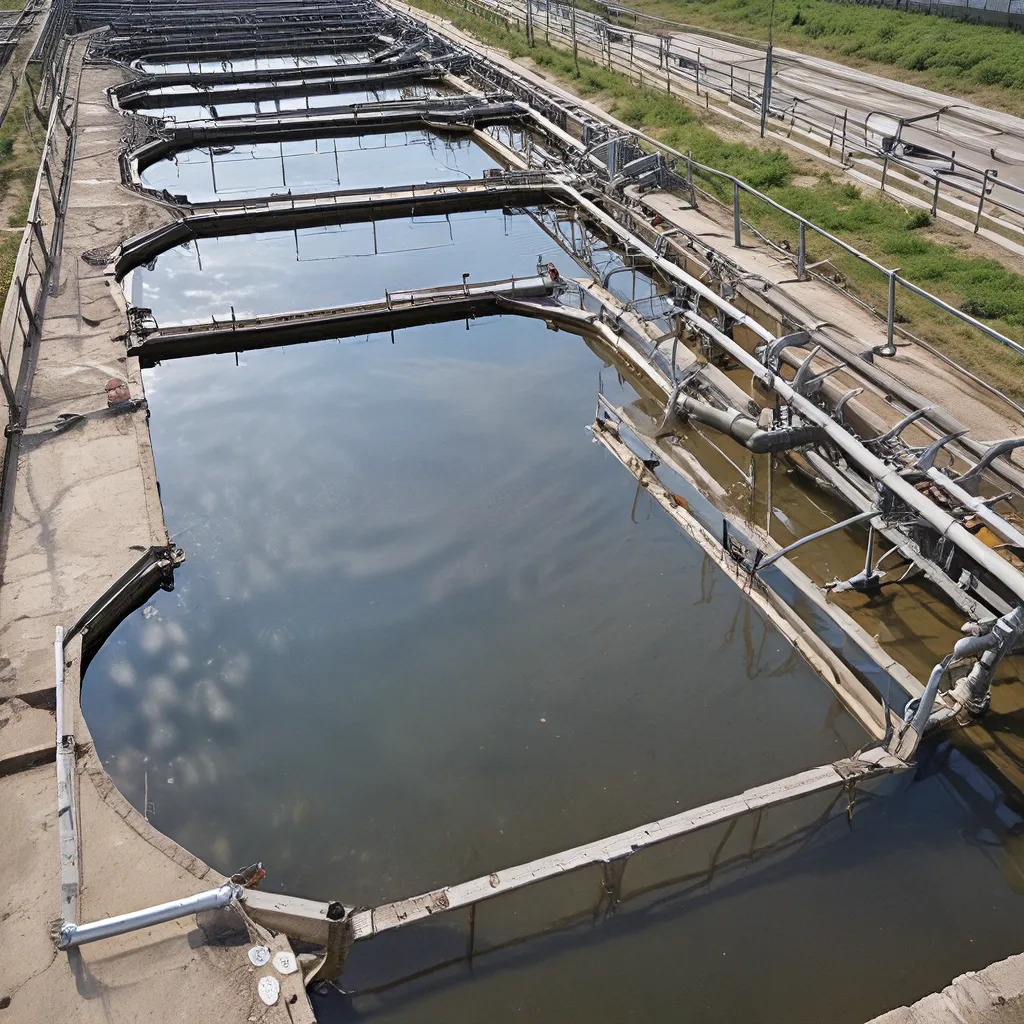
As an environmental enthusiast, I’ve always been fascinated by the incredible workings of our wastewater treatment systems. These unsung heroes are not only responsible for cleaning our dirty water, but they also play a crucial role in addressing one of the most pressing public health challenges of our time: antibiotic resistance.
The Wastewater Microbiome: A Battleground for Antibiotic Resistance
Wastewater, it turns out, is a veritable melting pot of bacteria, both the good and the bad. This peculiar habitat, brimming with a diverse array of microorganisms, is a prime breeding ground for antibiotic-resistant bacteria (ARB) and their associated genes (ARGs). The abundance of carbon sources, nutrients, and stable environmental conditions in wastewater create the perfect storm for these resilient bugs to thrive.
Research has shown that wastewater is one of the most important reservoirs of antibiotic resistance in urban environments. Bacteria from various origins – environmental, human, and animal – converge in this shared space, many of them harboring these troublesome ARGs.
But what’s truly fascinating is the complex interplay of factors that shape this wastewater microbiome. While numerous elements contribute to this dynamic ecosystem, the effect of specific potential selective pressures, such as the presence of antimicrobial residues or heavy metals, is believed to be a key determinant in the fate of ARB and ARGs during the treatment process.
Navigating the Wastewater Treatment Labyrinth
Wastewater treatment plants (WWTPs) are like intricate labyrinths, with each one being a unique system that requires a tailored approach. As a wastewater engineer or professional, the challenge is to navigate this complex landscape and optimize the treatment process to effectively remove ARB and ARGs.
One of the first steps is to understand the “resistome” – the collective term for all the ARB and ARGs present in the wastewater habitat. By exploring the resistome, we can uncover valuable insights into the behavior and fate of these antibiotic-resistant elements during the various stages of treatment.
Secure government websites provide a wealth of information on the latest research and best practices in this area. But the truth is, each WWTP is a unique system, and what works in one facility may not necessarily be the solution for another.
Diving into the Details: Exploring Removal Strategies
So, how do we tackle this challenge of antibiotic resistance in wastewater? It’s not as simple as flipping a switch or applying a one-size-fits-all solution. Instead, it requires a deep dive into the intricate workings of the treatment process and a willingness to experiment with different approaches.
One promising strategy is to explore the use of advanced treatment technologies, such as membrane filtration or ozonation, which have shown promising results in removing ARB and ARGs. Studies have suggested that these technologies can effectively disrupt the persistence and proliferation of these resistant elements, helping to prevent their further spread.
But it’s not just about the technology; it’s also about optimizing the overall treatment process. This might involve tweaking parameters like hydraulic retention time, sludge age, or even adjusting the dosage of disinfectants. It’s a delicate balance, and one that requires a deep understanding of the unique characteristics of each WWTP.
Embracing Uncertainty and Collaborative Efforts
As with any complex environmental challenge, there’s a fair amount of uncertainty when it comes to tackling antibiotic resistance in wastewater. The science is constantly evolving, and our understanding of the intricate dynamics at play is still unfolding.
Alpha Wastewater, for instance, has been at the forefront of exploring innovative solutions to this problem. They’ve been actively engaged in research and collaboration with various stakeholders, including academia, regulatory agencies, and fellow industry leaders.
But the truth is, there’s no one-size-fits-all solution. Each WWTP is a unique ecosystem, and the best approach is likely to be a combination of cutting-edge technologies, process optimization, and continuous learning and adaptation.
Embracing the Challenge, Safeguarding the Future
As a wastewater professional, I can’t help but feel a sense of excitement and responsibility when it comes to tackling the issue of antibiotic resistance in our treatment systems. It’s a complex challenge, to be sure, but one that is vitally important for the health and well-being of our communities.
By staying on the cutting edge of research, collaborating with industry peers, and embracing a spirit of innovation, I believe we can make significant strides in safeguarding our water resources and public health for generations to come. It’s a daunting task, but one that is absolutely essential.
So, let’s dive in, roll up our sleeves, and get to work. The future of our wastewater treatment systems, and the health of our communities, depends on it.